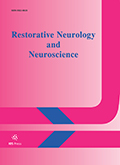Authors: Okura, Yoshio | Tanaka, Ryuichi | Ono, Koji | Yoshida, Seiichi | Tanuma, Naoyuki | Matsumoto, Yoh
Article Type:
Research Article
Abstract:
The central nervous system (CNS) of mammals has long been thought of as an immunologically privileged site. However, this concept is now changing because the rejection of histo-incompatible neural grafts has been frequently observed in the CNS. In neural transplantation used as therapy for some human neurodegenerative diseases, it is important to determine which factors are related to brain graft rejection. In this study, we examined immunological reactions in brains that had received isogeneic (rat to rat) and xenogeneic (mouse to rat) neural transplants. In the immunohistochemical analysis, antibodies against T cell receptor αβ (R73), macrophage and microglia (0X42), MHC
…class II antigens (0X6), CD4 (W3/25), CD8 (0X8), NK cell (3.2.3), B cell (RLN-9D3), T cell receptor (TCR) Vβ8.2 (R78), TCR Vβ8.5 (B73) and TCR Vβl0 (G101) were used. At the early stage of both isogeneic and xenogeneic transplantation, a nonspecific inflammatory reaction characterized by macrophage infiltration was observed along the needle track which was produced by the grafting procedure. From the day 7 stage onwards, the non-specific inflammatory reaction was replaced by the specific immune reactions of T cell infiltration, neovascularization and necrosis of xenogeneic grafts. Marked T cell infiltration was detected in the lesions, whereas NK and B cells were not. Quantitative analysis of T cell subsets revealed that both CD4+ and CD8+ T cells were found in the xenogeneic transplants. Microglia became activated and strongly expressed MHC class II antigens at the time of graft rejection. Isogeneic transplants, in contrast, showed no histological characteristics of rejection, and numerous dopaminergic neurons with several neurites were observed in the grafts. Based on these findings, we concluded that T cells are the principal effectors in the rejection of xenogeneic neural grafts, and that activated microglia may have some role in presenting antigens to the infiltrating T cells during the rejection process.
Show more
Keywords: Xenogeneic neural transplantation, Rejection response, Immunohistochemical analysis
DOI: 10.3233/RNN-1997-11401
Citation: Restorative Neurology and Neuroscience,
vol. 11, no. 4, pp. 177-187, 1997
Price: EUR 27.50




